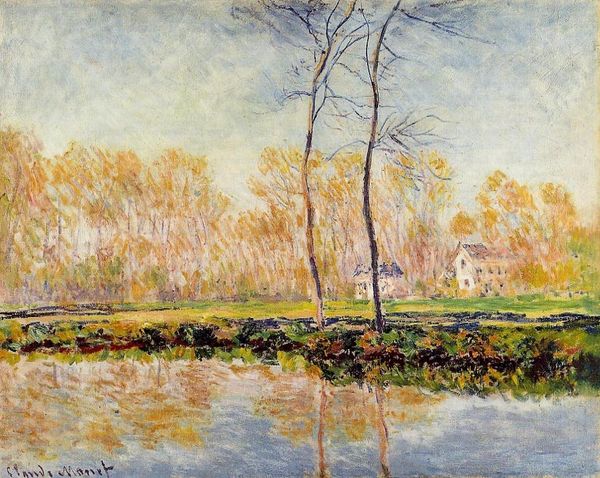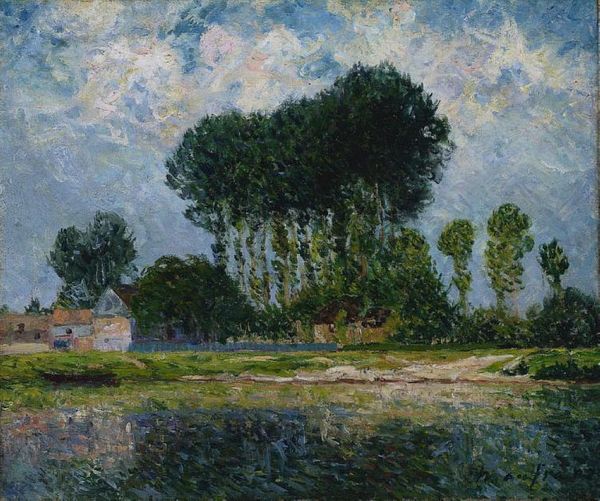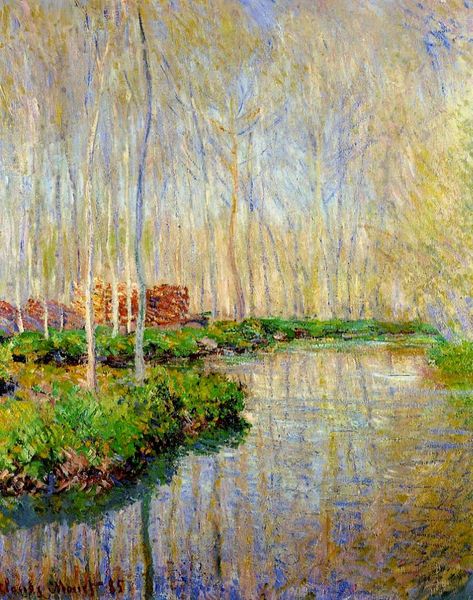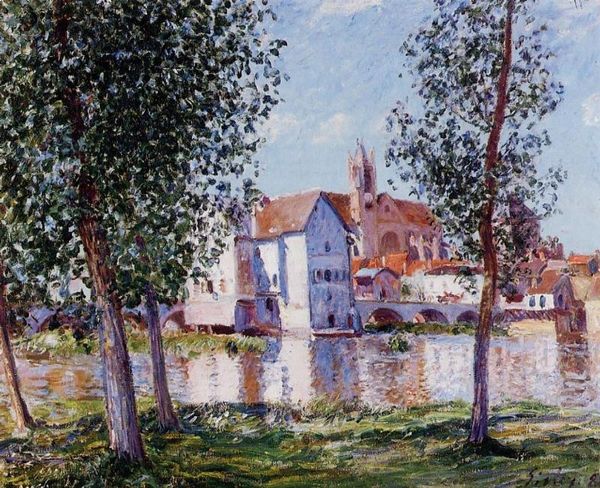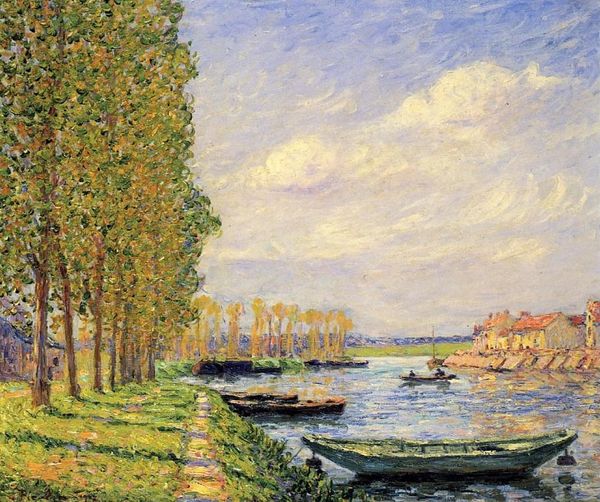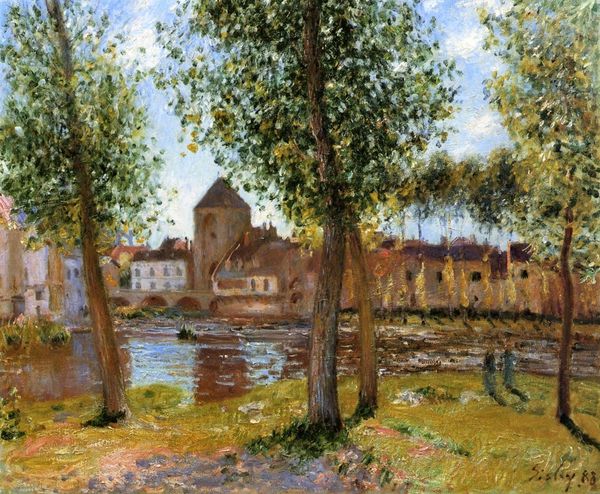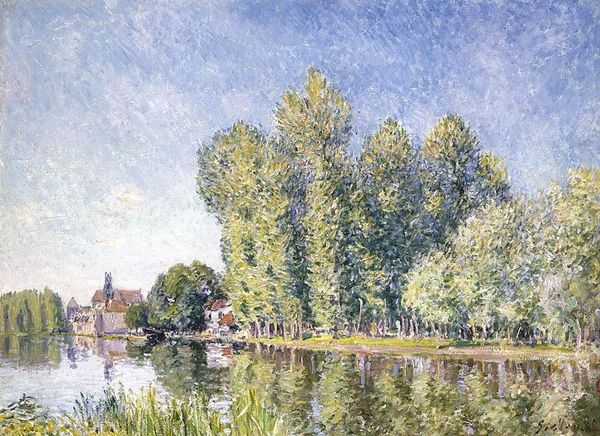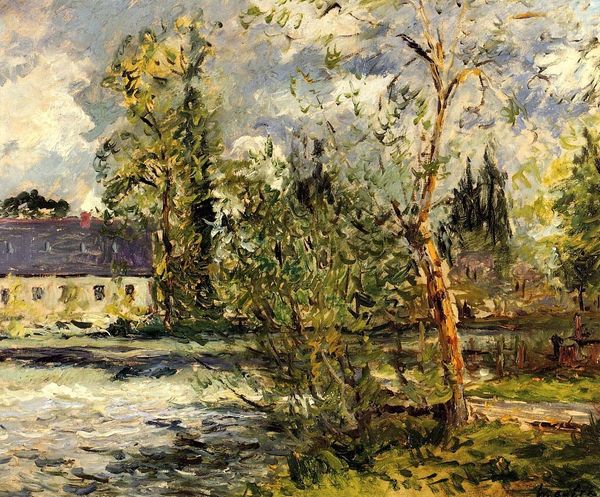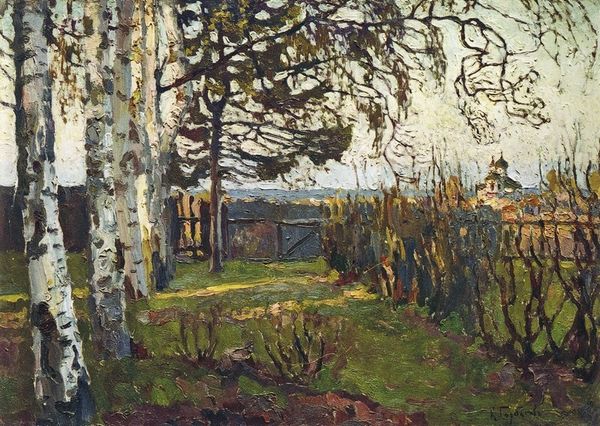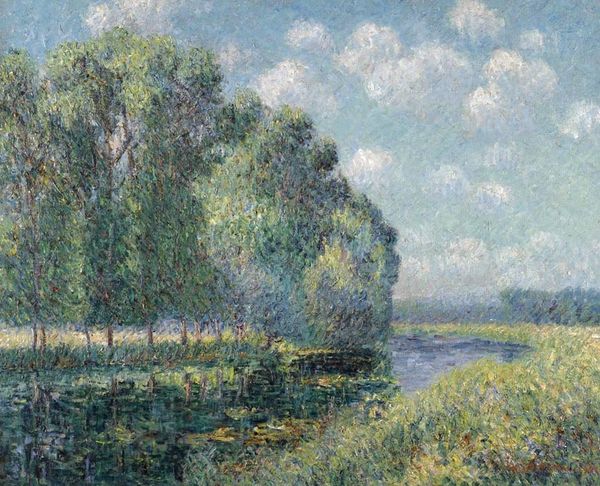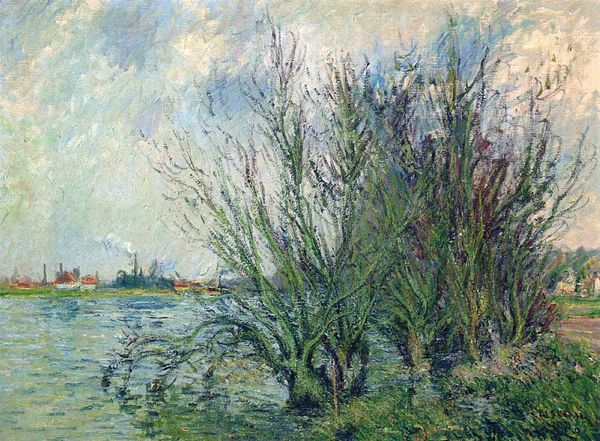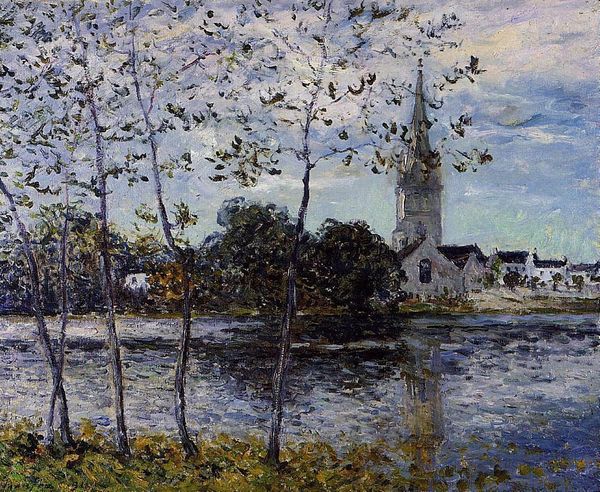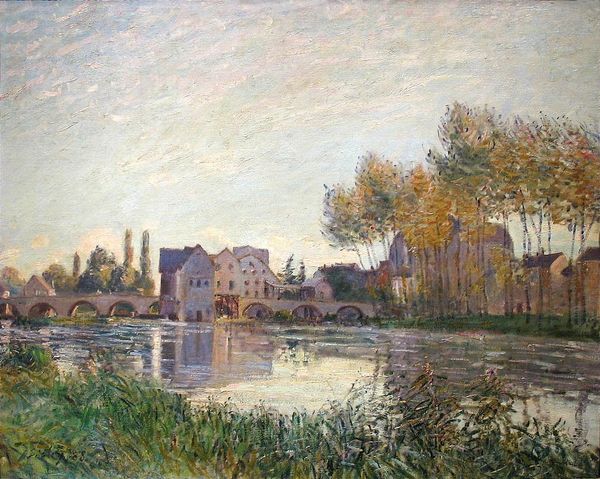
Dimensions: 33.5 x 46 cm
Copyright: Public domain US
Curator: I am immediately drawn in. This image has a calming quality; its soft light makes it look like time slows to a crawl. Editor: Indeed! What we are looking at is Francis Picabia’s, "The Effect of Sun on the Banks of the Loing," painted in 1905. It's an oil on canvas and an excellent example of impressionist landscape painting, a genre heavily invested in capturing ephemeral sensory experiences, particularly light. Curator: You know, when I first saw this, it struck me as almost aggressively normal, which, for Picabia, is delightfully odd! A peaceful river, some trees... where’s the rebellion? But then you realize, maybe the rebellion *is* finding the beauty in the everyday, the sunlight on water. Editor: A very interesting point, but consider that this was created during a period of rapid industrialization and urbanization in Europe. The embrace of rural landscapes and leisurely activities by Impressionist painters like Picabia can be seen as a form of resistance. It was about rejecting the increasing mechanization of life, a longing for a simpler, more organic existence, even a class signifier that involved owning boats. Curator: Okay, boats and class, I can dig it! But look at the brushstrokes; there's a dance between realism and abstraction, right? He's capturing not just what he sees, but how he *feels* seeing it. I wonder if there are photographic references for his outdoor oil works? Editor: I think so. There are always debates around the exact relationships of painting, visual technologies, and society in any historical frame. But what’s so interesting is this play between naturalism and technique, which moves beyond merely recording scenery, towards the experience of ‘being’ within the scene. Curator: I like that. Like standing on that bank, dappled light warming my face… except I’m allergic to trees, so maybe I’ll admire it from a climate-controlled museum instead! Thanks for bringing the world to my attention. Editor: Of course. There are many competing worlds embedded in one’s vision for change, especially those that can be seen on canvas, that always deserve our critical gaze.
Comments
No comments
Be the first to comment and join the conversation on the ultimate creative platform.

